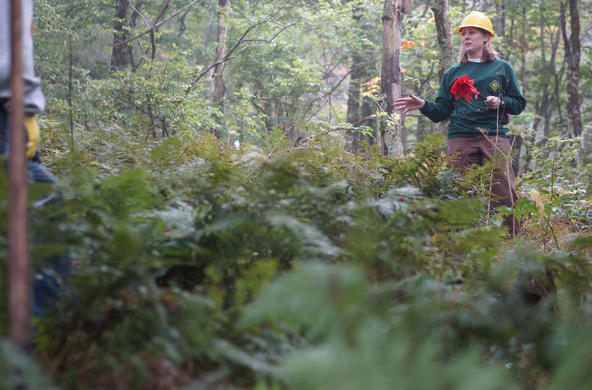We think of invaders taking over their worlds in a fairly uniform way.
But in some places, they move like Genghis Khan. In other places it's more like a gradual resettlement.
In the Housatonic River, zebra mussels -- non-native bivalves that can move into a water body and just dominate it -- were found in 2009 in Massachusetts and in 2010 in Connecticut at Lake Lillinonah and Lake Zoar.
They're moving slowly down the river itself, ever further south. But their numbers in the river aren't overwhelming.
There's some evidence that the population might be accelerating in Lillinonah and Zoar, where people found hundreds of the small striped shellfish attached to their docks and boats last year. The worry is that at year's end, it will be hundreds of thousands.
But just over the border, at the Hudson river, the zebra mussel did to the river what the Vikings did to the monastery at Lindisfarne -- they just overran the place.
David Strayer of the Cary Institute of Ecosystems Studies in Millbrook, N.Y. has studied the zebra mussel takeover in the Hudson. He's now finding something unexpected: The takeover is changing, and diminishing.
Strayer said that zebra mussels first appeared in the Hudson in 1991. In less than two years, he said, the weight of the zebra mussels in the river was greater than the combined weight of all the fish, all the water birds, all the invertebrates, all the other bivalves, all the eels, all the insects in the river.
Every day or two, all those mussels filtered out a volume of water equivalent to all the water in the river.
"Each female can have 1 million eggs a year,'' Strayer said. "They can really take off.''
And, he said, the Hudson has a rocky bottom -- good for a mussel to latch onto -- and a high-enough level of calcium in the water to feed the mussels as they develop.
As a result, the Hudson was reordered. The mussels filtered out the phytoplankton and the zooplankton in the river that other species depend on for food. The water became unnaturally clear. Fish populations were damaged.
But there's been an interesting turn.
Strayer said the mussels are still there in the Hudson. Millions and millions of them. It's not correct to say they're in decline.
But, he said, his research is finding that gradually, the population of the mussels in the Hudson is getting younger. It's rare to find large, older zebra mussels there. Right now, he said, there is less than a 1 percent chance in the Hudson that a zebra mussel will survive beyond its first year.
One reason for this -- and one that Connecticut can't rely on -- are blue crabs. They live in the Hudson as far north as Albany, Strayer said, and they like to eat mussels.
But that's not the only reason. Strayer's not sure what the others are -- maybe it's rising water temperatures. Maybe other factors.
"There are several theories,'' he said.
Because the zebra mussels in the Hudson are much younger than they used to be, they are on the whole, much smaller and thus filter much less water. While phytoplankton levels remain low, zooplankton levels have recovered to pre-invasion levels.
And fish are returning. Numbers of shad and striped bass -- which depend on the zooplankton for food -- are rebounding. Sunfish and blackfish are growing faster.
Strayer said it's not probable that the zebra mussels will disappear little by little. But things are changing.
But even if they decline in numbers, not just size, the zebra mussels have altered the Hudson in ways unimaginable 20 years ago.
The mark of the invader lingers.
"They've just completely transformed the ecology of the river,'' Strayer said.






